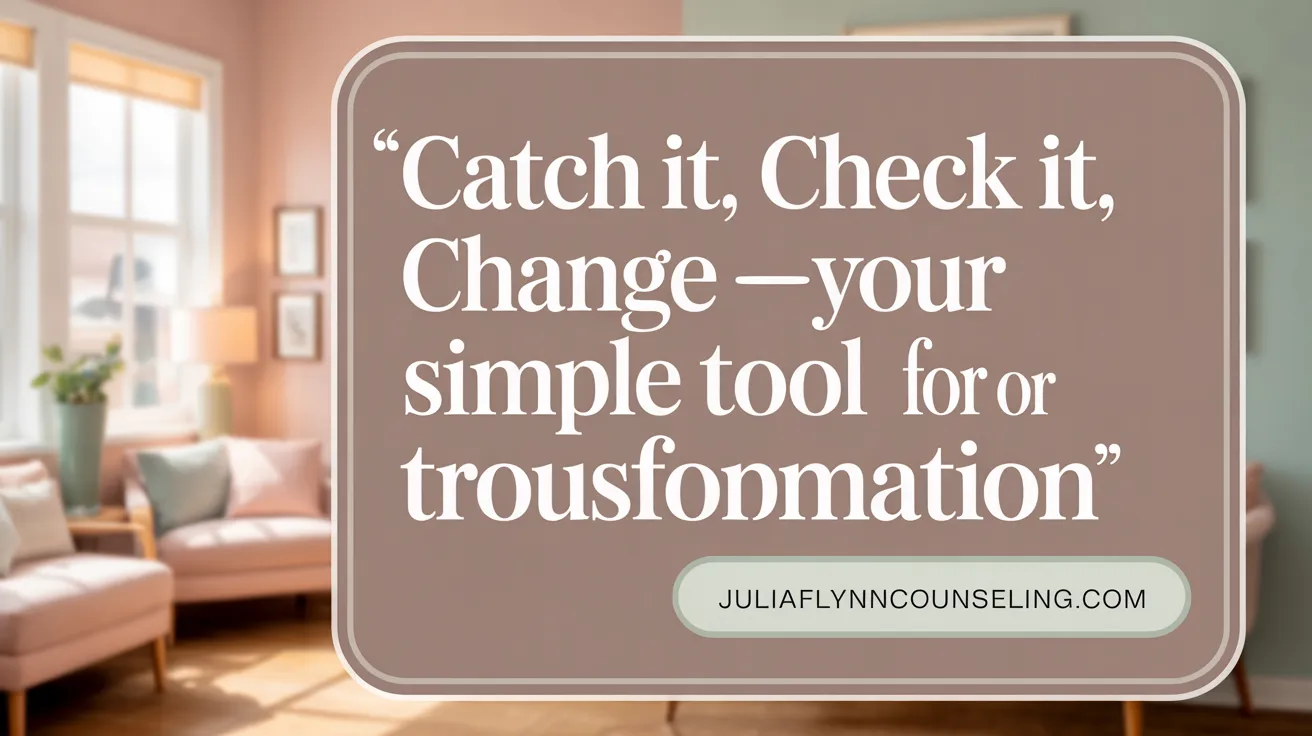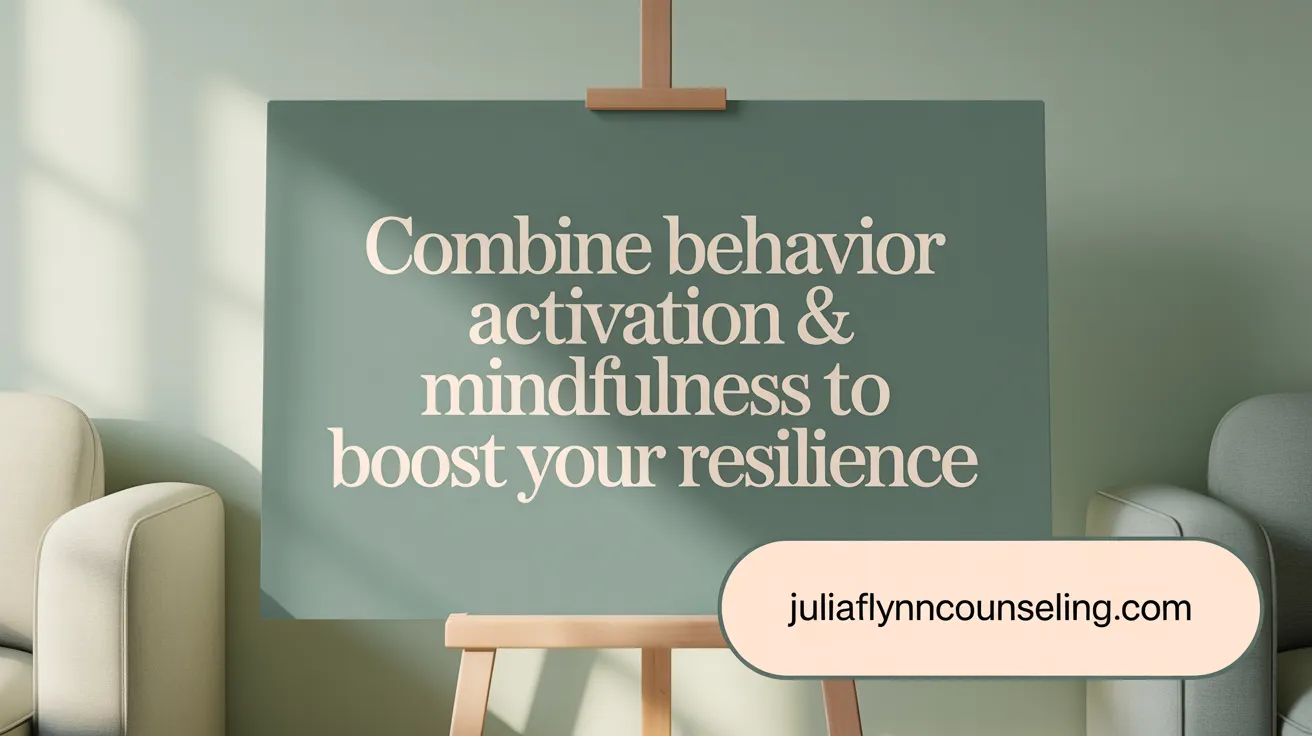Changing Minds, Changing Lives
Cognitive Behavioral Therapy (CBT) stands as a beacon of hope and scientific rigor in the treatment of mental health challenges. At its core, CBT is centered on the transformative potential of reshaping negative thought patterns to foster emotional resilience and behavioral change. This article explores how CBT systematically dismantles unhelpful thinking, empowering individuals to regain control over their minds and their lives through evidence-based strategies.
The Foundations and Effectiveness of Cognitive Behavioral Therapy

Core principles of CBT
Cognitive Behavioral Therapy (CBT) is based on the idea that an individual's thoughts, feelings, and behaviors are closely connected. It focuses on identifying and modifying unhelpful or distorted thinking patterns, known as cognitive distortions, along with learned negative behaviors. By recognizing these patterns, clients learn to replace them with more balanced and realistic thoughts and behaviors, which can improve emotional regulation and reduce symptoms of various conditions.
Historical development and evidence base
CBT originated in the 1950s and 1960s from pioneering work by psychologists such as Aaron Beck and Albert Ellis. Over decades, its methods have been refined and expanded, including modern approaches that integrate mindfulness and acceptance strategies known as third-wave CBT. It is the most extensively researched psychotherapy, supported by thousands of studies demonstrating medium to large effect sizes for diverse mental health disorders. Systematic reviews and meta-analyses validate its efficacy, often showing CBT to be as effective or superior to medications.
CBT’s role across mental health and physical conditions
CBT is widely used in treating anxiety disorders, depression, obsessive-compulsive disorder (OCD), post-traumatic stress disorder (PTSD), eating disorders, and other psychiatric conditions. It also benefits individuals facing physical health challenges like chronic fatigue syndrome, fibromyalgia, irritable bowel syndrome, and pain management. The therapy helps reduce avoidance behaviors, teaches coping mechanisms, and improves quality of life across mental and somatic illnesses (source).
Structure and typical duration of CBT therapy
CBT is typically time-limited and goal-oriented, often encompassing 5 to 20 weekly sessions lasting around one hour each. Treatment begins with assessment and goal setting, followed by active collaboration between therapist and client to identify problematic thoughts and behaviors. Homework and exercises such as thought records, and cognitive restructuring techniques are core components, reinforcing skills learned in therapy. This structured approach empowers clients to independently manage symptoms and maintain gains post-therapy (source).
Understanding Negative Thought Patterns and Cognitive Distortions
What are cognitive distortions and common types?
Cognitive distortions are inaccurate or biased ways of thinking that can lead to negative emotions and beliefs. These thought patterns are often automatic and can distort reality, influencing how people perceive themselves and the world. Examples include:
- Catastrophizing: Expecting the worst-case scenario to happen.
- Black-and-white thinking: Seeing situations in extremes, like all good or all bad, without middle ground.
- Personalization: Blaming oneself for negative events that are not entirely one's fault. Other types include overgeneralization, magnification, and minimization. For more on cognitive distortions, techniques to identify and challenge them are explored in cognitive restructuring.
How do automatic thoughts and negativity bias affect us?
Automatic thoughts are spontaneous, immediate ideas or interpretations about events, often unconscious. Humans naturally possess a negativity bias, a survival mechanism causing a focus on negative experiences and thoughts more than positive ones. This tendency makes negative automatic thoughts more frequent and impactful, fueling cycles of stress, anxiety, or depression. Learn about automatic thoughts in CBT and how to manage the negativity bias with CBT.
What are common negative thought patterns?
Common patterns include:
- Catastrophizing: Fearing a minor problem will lead to disaster.
- Black-or-white thinking: Using absolutes like "always" or "never" to judge situations.
- Personalization: Internalizing blame for things beyond control. These patterns can distort reality and impair emotional balance. Techniques for challenging negative thinking patterns and controlling unhelpful thoughts can be helpful.
How do these distortions impact emotional wellbeing?
Cognitive distortions can create a feedback loop of negativity, increasing stress, anxiety, and depressive symptoms. They reduce self-esteem and resilience by reinforcing irrational beliefs about oneself and external events. Recognizing these patterns is a first step toward reframing and improving mental health, as seen in therapies like Cognitive Behavioral Therapy (CBT). For strategies to reframe thoughts and improve wellbeing, see resources on reframing unhelpful thoughts and CBT benefits for emotional regulation.
Cognitive Restructuring: The Heart of Transforming Thought Patterns

What is cognitive restructuring and what are its goals?
Cognitive restructuring is a core therapeutic process in Cognitive Behavioral Therapy (CBT) focused on identifying and changing negative or distorted thinking patterns, often called cognitive distortions. The goal is to help individuals replace unhelpful, biased, or irrational thoughts with balanced, realistic perspectives. This process promotes healthier emotional responses and adaptive behaviors, enhancing overall mental wellbeing.
What techniques are used in cognitive restructuring?
Several techniques support cognitive restructuring, including:
- Socratic questioning: Asking guided questions to challenge the evidence behind negative thoughts and explore alternative interpretations.
- Thought records: Structured journaling that tracks automatic negative thoughts, associated emotions, and evidence that supports or contradicts these thoughts.
- Behavioral experiments: Testing beliefs practically in real-life situations to gather firsthand evidence that may reinforce or refute cognitive distortions.
- Other methods: Include guided imagery, decatastrophizing, ABC belief monitoring, and challenging automatic thoughts through worksheets.
How does cognitive reframing fit into CBT?
Cognitive reframing is essentially the art of reinterpreting negative thoughts into more neutral or positive ones based on evidence examined during restructuring. It is a pivotal CBT approach that breaks the cycle of unhelpful thinking, thereby reducing stress, anxiety, and depression. Reframing encourages mental flexibility and helps individuals develop healthier thinking habits.
What are the benefits of cognitive restructuring for mental wellbeing?
Practicing cognitive restructuring consistently can lead to:
- Reduced stress and anxiety
- Improved emotional resilience
- Enhanced life satisfaction
- Better communication and healthier relationships
- Increased self-confidence and self-esteem
- Long-term skills for managing negative thought cycles independently
Overall, cognitive restructuring empowers individuals to gain control over their thoughts, facilitating meaningful improvements in mental health and quality of life.
The Practical 'Catch It, Check It, Change It' Technique

Steps Involved: Identifying, Examining, and Reframing Thoughts
The 'catch it, check it, change it' technique is a straightforward cognitive behavioral therapy (CBT) technique designed to help individuals manage unhelpful thoughts. The first step, "catch it," involves becoming aware of automatic negative thoughts as they occur. Next, "check it" encourages examining these thoughts critically, asking questions like whether the thought is based on facts or just an assumption, and considering alternative explanations. Finally, "change it" prompts reformulating the original negative thought into a more balanced, positive, or neutral one based on evidence.
Examples of Unhelpful Thoughts and Their Transformation
Common unhelpful thoughts include expecting the worst (catastrophizing), focusing only on the negatives, engaging in black-and-white thinking (all-or-nothing thinking), or blaming oneself excessively. For instance, the thought "I always fail at everything" can be reframed to "Sometimes I succeed, and sometimes I don't, just like everyone else." This process reduces emotional distress and encourages a realistic perspective by challenging negative thinking patterns.
Use of Thought Records and Structured Exercises
Thought records are practical tools in this technique, where individuals write down the situation, their feelings, the unhelpful thought, evidence for and against that thought, and a revised balanced thought. Structured exercises like these reinforce the habit of monitoring and adjusting thoughts, making the reframing process more effective and consistent over time. These strategies are part of cognitive restructuring, a core component of CBT.
Developing Mental Flexibility and Control
It is important to recognize that not all negative thoughts can be changed immediately. The practice encourages mental flexibility—learning to identify unhelpful thoughts without becoming overwhelmed and separating helpful from unhelpful thoughts. Over time, this leads to greater control over emotional reactions and contributes to improved mental well-being through techniques described in CBT for improving mental health and wellbeing.
Integration of Behavioral Techniques and Mindfulness in CBT

Linking thoughts, feelings, and behaviors
Cognitive Behavioral Therapy (CBT) is founded on the idea that our thoughts, feelings, and behaviors are deeply interconnected. Understanding this link helps individuals see how changing negative thoughts can lead to healthier emotions and actions.
Behavioral activation and exposure therapy
CBT uses behavioral techniques such as behavioral activation which encourages engagement in meaningful activities to counteract withdrawal and depression. Exposure therapy is another core method where individuals gradually face feared situations to reduce anxiety, thereby breaking avoidance patterns and building confidence.
Mindfulness meditation and relaxation techniques
Mindfulness practices are integrated into modern CBT approaches to help people disengage from negative ruminations by focusing on the present moment. Combined with relaxation methods like deep breathing, these techniques promote emotional regulation, reduce stress, and improve concentration.
Building resilience and coping skills
Through CBT, individuals develop coping strategies to manage stress, face fears, and solve problems proactively. Positive reinforcement techniques such as affirmations and gratitude journaling further build emotional resilience, empowering people to respond more flexibly to life's challenges.
Accessibility and Adaptations of CBT: Online and Self-Help Approaches
Emergence of online CBT programs and apps
In recent years, cognitive behavioral therapy (CBT) has extended beyond traditional face-to-face sessions through the development of online programs and mobile apps. These digital platforms offer structured CBT exercises and guidance, making therapy more accessible to a wider audience.
Benefits and considerations regarding cost-effectiveness and reach
Online CBT and app-based interventions provide cost-effective alternatives to in-person therapy, reducing travel and scheduling barriers. They enable more people to engage with therapeutic techniques, especially those in remote or underserved areas. However, ensuring effectiveness and user engagement remains critical to success.
Role of self-help CBT inspired strategies
Self-help CBT techniques, such as reframing unhelpful thoughts, problem solving, and building resilience, empower individuals to manage their mental health independently. These strategies often accompany online programs or are used by individuals seeking additional support outside clinical settings.
Integration with traditional therapy
Online and self-help CBT approaches complement traditional therapy by providing continuous support between sessions or for those awaiting treatment. Combining these methods can enhance the overall therapeutic experience, supporting sustained mental wellbeing.
Long-Term Benefits and Scientific Recognition of CBT
Sustained Symptom Improvement and Relapse Prevention
Extensive research shows that Cognitive Behavioral Therapy (CBT) not only provides immediate relief but also offers long-lasting benefits. Studies, including long-term follow-ups, reveal significant and sustained improvements in mental health symptoms such as depression and anxiety. For example, individuals receiving CBT alongside usual care often experience robust symptom reduction lasting years post-therapy. CBT also contributes to relapse prevention by equipping patients with coping skills to manage future stressors effectively (CBT offers long-term benefits).
CBT in Clinical Guidelines and Health Insurance Schemes
CBT's effectiveness has established it as a recommended first-line treatment in numerous national and international clinical guidelines. Its clinical value is recognized globally, with some health systems, such as Japan's National Health Insurance, formally integrating CBT coverage since 2010 for psychiatric conditions (Cognitive–behavioral therapy (CBT) for mental health). This inclusion underscores both scientific endorsement and increased accessibility for patients requiring psychological treatment.
Evidence from Meta-Analyses and Large Clinical Studies
Meta-analytic data from hundreds of randomized controlled trials (RCTs) involving tens of thousands of participants confirm CBT's medium to large effect sizes across a broad range of conditions (evidence supporting cognitive behavioural therapy). Large-scale naturalistic studies further demonstrate CBT’s real-world effectiveness across diverse outpatient populations, highlighting significant symptom reductions and high patient satisfaction (Cognitive Behavioral Therapy effectiveness). These findings consistently support CBT’s robust impact on quality of life, anxiety levels, and pain management.
Combination with Medication and Other Therapies
CBT is frequently used alongside pharmacotherapy, enhancing overall treatment outcomes. The therapy complements medication by addressing cognitive and behavioral factors that medication alone may not fully resolve (Cognitive Behavioral Therapy (CBT) overview). Additionally, CBT integrates with other psychotherapeutic approaches, including mindfulness and acceptance techniques from third-wave CBT, tailoring interventions to individual needs and promoting comprehensive mental health care (Cognitive–behavioral therapy (CBT) for mental health.
Empowering Individuals Through CBT: Skill Development and Self-Management

Desirable Outcomes Including Emotional Regulation and Self-Esteem
CBT helps individuals gain control over their thoughts, which directly influences emotional regulation. By challenging and reframing negative or irrational beliefs, people learn to manage intense emotions more effectively, reducing symptoms of anxiety and depression. This process also promotes enhanced self-esteem by encouraging a positive self-view and dismissing critical, distorted thoughts.
Development of Problem-Solving and Communication Skills
Through CBT, individuals develop stronger problem-solving skills that empower a proactive approach when facing social, personal, or professional challenges. The therapy also emphasizes communication skills training, enabling people to better express needs, set boundaries, and resolve conflicts, which is pivotal for healthier relationships.
Encouraging Self-Reflection and Independent Application
A vital aspect of CBT is fostering self-reflection and self-awareness. Clients are equipped with practical tools and strategies—such as thought records and cognitive restructuring techniques—that they can independently apply beyond therapy sessions. This self-management ability leads to lasting emotional resilience and the capacity to handle future challenges without continuous therapist support.
Therapeutic Collaboration and Goal Setting
CBT is a collaborative process where therapists and clients work together to understand issues, identify unhelpful thoughts and behaviors, and set measurable, achievable goals. This partnership encourages active participation and honesty, which enhances therapy outcomes and empowers individuals to take ownership of their mental health journey.
Transforming Thought Patterns for Lasting Change
Cognitive Behavioral Therapy offers an empirically backed framework for understanding and transforming the ways in which negative thought patterns affect emotional and behavioral health. Through techniques like cognitive restructuring and the 'catch it, check it, change it' approach, CBT empowers individuals to habitually challenge distorted thinking and adopt balanced perspectives. When combined with behavioral strategies and mindfulness, CBT produces holistic improvements in mental wellbeing. Its adaptations into online and self-help formats increase its accessibility, while substantial long-term benefits solidify its status as an essential therapeutic approach. Ultimately, CBT equips individuals with enduring skills not only to overcome current difficulties but also to navigate future challenges with confidence, cultivating a lasting positive impact on mental health and quality of life.
